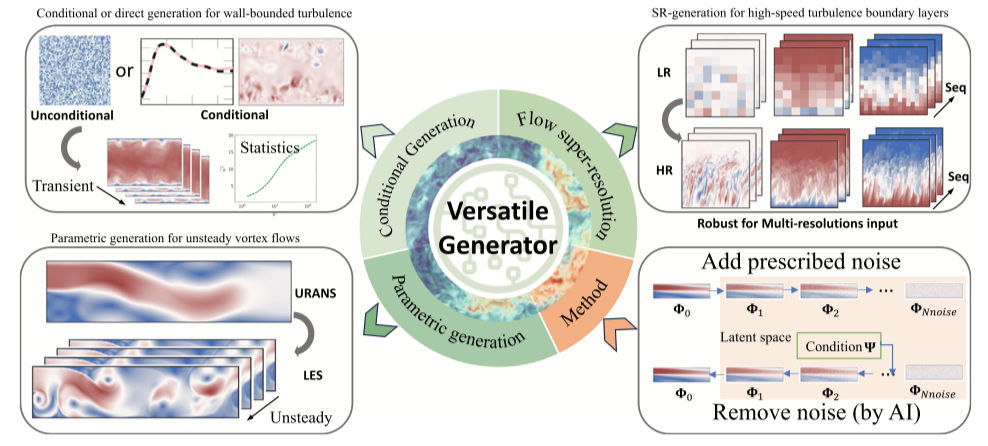AI for Turbulence Modeling

We develop physics-informed generative frameworks—rooted in Bayesian diffusion models, guided diffusion, and latent-space
operator learning—to produce high-fidelity, spatiotemporally coherent turbulence data at RANS, LES, and DNS resolutions.
Our methods learn stochastic closures that respect realizability, enable conditional generation
from coarse or partial inputs, and accelerate flow prediction by orders of magnitude. Key capabilities include:
• Conditional synthesis of LES-like fields from URANS or low-resolution data;
• Parametric generative solvers forecasting flow dynamics across Reynolds-number ranges via gradient guidance and virtual observations;
• G-LED (Generative Learning of Effective Dynamics), combining autoregressive attention with diffusion decoders to capture multiscale turbulence statistics efficiently.
Benchmark studies—channel flow, backward-facing step, supersonic boundary layers—show accurate spectra and Reynolds-stress recovery with massive speed-ups over traditional solvers.
Related Publications
- Gao H., Wang J.-X. • Bayesian Conditional Diffusion Models for Versatile Spatiotemporal Turbulence Generation — [Link]
- Gao H., Kaltenbach S., Koumoutsakos P. • Generative Learning of the Solution of Parametric PDEs Using Guided Diffusion Models and Virtual Observations — [Link]
- Gao H., Kaltenbach S., Koumoutsakos P. • Generative Learning for Forecasting the Dynamics of High-Dimensional Complex Systems — [Link]